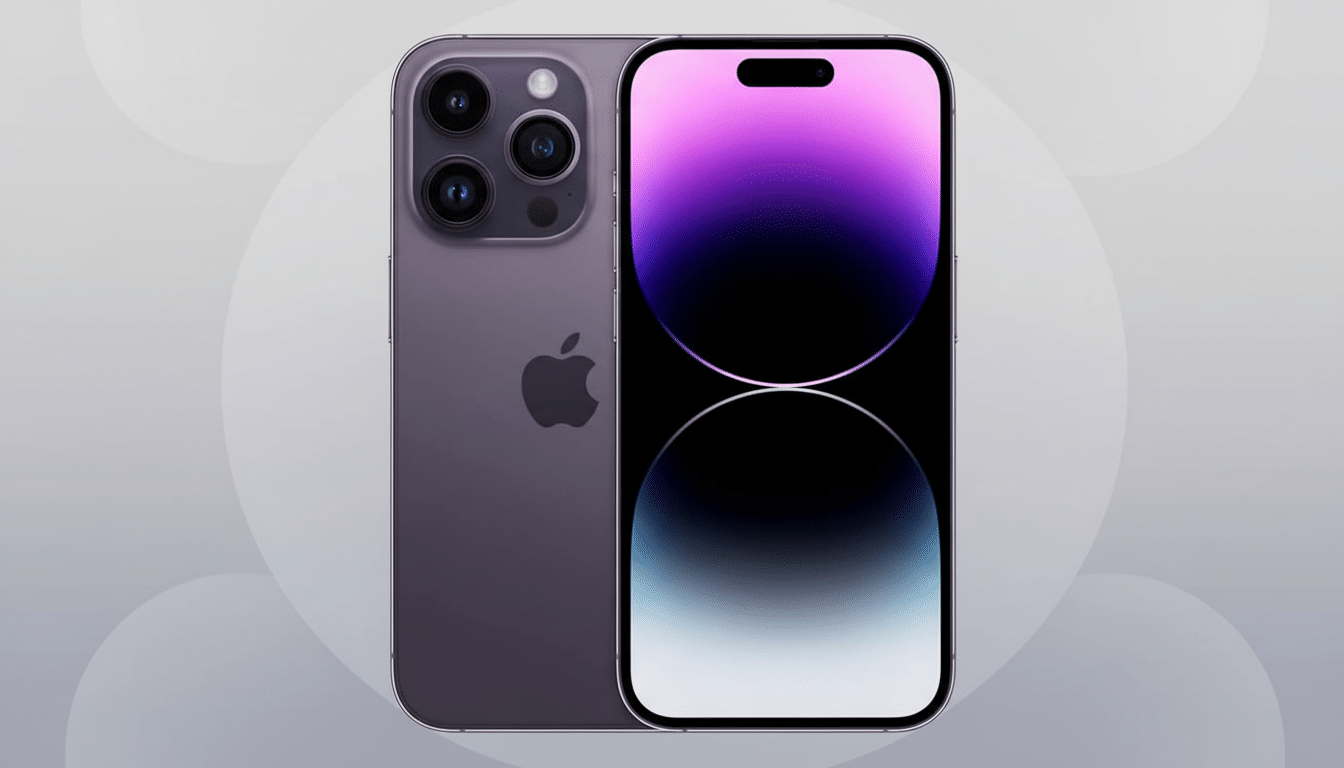Apple’s trademark Dynamic Island might be living on borrowed time. According to new supply chain chatter, the company is working on an all‑screen iPhone that buries the selfie hardware behind the display glass, which would eliminate the home of the Island’s pill-shaped cutout and drive the front face closer to an authentic “full slab of glass.”
Reports collected by MacRumors suggest a long runway, with the timing linked to a 20th‑anniversary iPhone in the latter half of this decade. The likes of Display Supply Chain Consultants’ Ross Young have also presented a roadmap that positions under‑panel Face ID ahead of an entirely under-display camera, arriving at the latter sometime in 2027–2028. As ever with Apple, the timing can be a fudge factor, depending on component yields, image quality and cost.

The rumor and timeline for Apple’s under-display plans
Dynamic Island made its debut on iPhone 14 Pro as a neat software layer that transformed what was supposed to be a hardware compromise into a UI jewel. With the iPhone 15, Apple made the feature standard across the series, giving an indication that it was here to stay. The new rumor doesn’t exclude that strategy, but it simply suggests the next big step for Apple: make the cutout disappear while keeping all of the functionality that made the Island useful.
Multiple analysts, including Ming‑Chi Kuo and Ross Young, have for a long time described a two‑phase journey: first replace the Face ID components underneath the OLED and then move the selfie camera after image fidelity meets Apple’s high bar. The staggered approach there aligns with Apple’s past behavior of pacing the big hardware changes across cycles rather than attempting them all in one single, risky leap.
Why under-display tech is hard for Face ID and cameras
Cameras under OLED aren’t only a puzzle of mechanical design; they’re also a matter of physics. Above-the-lens pixels scatter light, impart color tint and reduce transmission with resulting hazing, loss of detail and lower dynamic range. Manufacturers fight back with such tricks as micro‑patterned transparent layers, locally reduced pixel density, bespoke OLED materials for greater transmittance and heavy computational photography to tidy things up.
Face ID complicates matters further. Apple’s TrueDepth system incorporates a dot projector, infrared camera and flood illuminator. Sending IR light through a display stack consistently under all manner of angles and brightness levels is possible only with custom panel architectures provided by suppliers like Samsung Display or LG Display. The Elec has reported in the past on under‑panel IR developments customized for Apple, but attaining Apple‑grade security and speed over the OLED layer is a tall order.
What happens to Face ID and your selfies with no cutout
If Apple can make those cutouts invisible, two things have to be true. First, Face ID has to continue being instantaneous and precise through more layers, in cases like sunglasses scenarios or in the dark. Second, the selfie camera has to offer parity with today’s quality for video calls, Portrait mode and social apps. Expect some combination of a bigger sensor, an even wider aperture, better anti‑reflection coatings in the panel stack and new machine‑learning de‑artifacting tuned for under‑display optics.

Apple should also be free to open up space for items currently pegged to the Island—notifications, background activity indicators, and Live Activities. The company might continue to use those animations as a software motif even without an actual cutout, or allow them to float contextually through the status area. And yet there’s a tradition at Apple of maintaining all our favorite UI metaphors even as the hardware changes.
Lessons from Android experiments with under-display
Under‑display cameras aren’t unprecedented. ZTE started the party here, and Samsung has been shipping a 4MP under‑panel camera in its Galaxy Z Fold line for all of two generations now. The trade‑offs have been well-publicized: softer selfies, the visible pixel matrix above the lens in certain lighting conditions and less predictable video quality. Reviews always seem to mention the engineering leap, but also the distance from traditional punch‑hole cameras.
That backdrop is relevant because what Apple or any company does when it comes to a technology of the future is usually hold off until that technology crosses some observable threshold of quality. But the likes of Counterpoint Research and other research firms have been quick to point out such under-display solutions still account for a tiny fraction of smartphone shipments, owing to both cost and performance limitations. For Apple, which has around 20 percent of the global market and ships at a titanic scale, yield and consistency are just as important as wow.
What an all-screen iPhone would mean for design and UI
A front without holes would be the most striking shift in iPhone industrial design since the notch. Apple’s design team would be free to tighten bezels, increase active area for reading or video viewing, and possibly introduce new ways to interface with the OS through a system UI at the bottom so that users can go ‘home’ from any app. It would also indicate that the Island had been a bridge and — an elegant one — on the road to pure display.
Still, the rumor should be taken as direction, not a date. 2027 or beyond could be when the milestone falls, but ingredients are coming together: supplier roadmaps paving the way for under‑panel IR, computational cleanup around under‑display imaging and Apple’s motivation to bring you a visually seamless canvas. When and if Dynamic Island is no longer with us, it will be because Apple can make its absence feel like progress, rather than loss.

